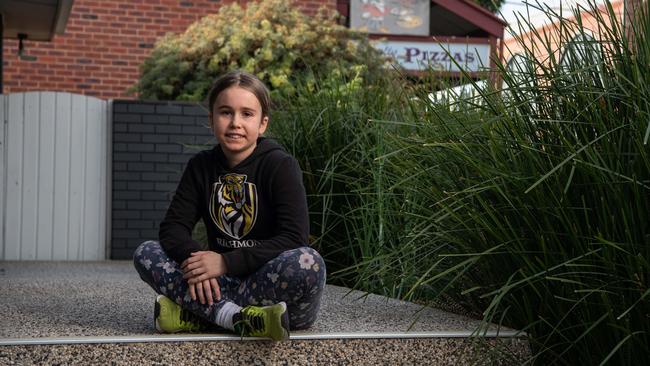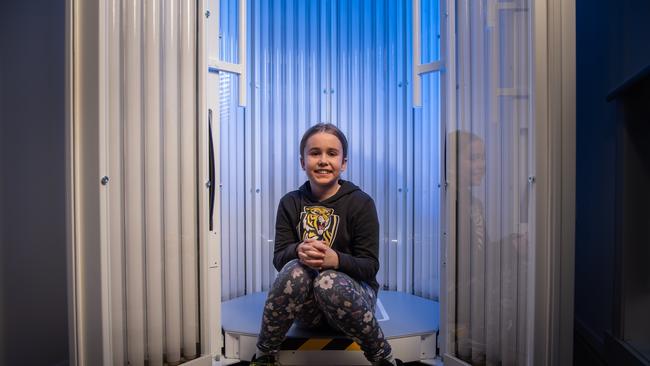National Eczema Week: How light therapy to treat eczema in local patients
Mietta Smith’s eczema was so bad she couldn’t go to the beach and was in pain. A new therapy has helped change her life.

Geelong
Don't miss out on the headlines from Geelong. Followed categories will be added to My News.
Mietta Smith was only two-years-old when she was diagnosed with eczema, a chronic and inflammatory skin condition.
Her mum, Bronwyn Jennings, said she noticed Mietta, now 10-years-old, had dry skin and red rashes on her body.
There was a history of eczema in her family so the news did not come as a shock.
Initially, Mietta’s eczema was treated using over-the-counter creams and prescription medication, such as steroid formulas, from her local GP.
Mietta had an eczema flare up about four months ago which could not be treated with her usual medication, Ms Jennings said.
“It was mainly on her hands and feet but she had it to different degrees all over her whole body,” she said.
“We would have to cover her hands everyday because she kept scratching them and she had huge sores over her hands and feet.
“It stopped her from going swimming at the beach because her skin would sting and she would cry.”

Mietta now receives phototherapy treatment three times per week at the Dermatology Clinics Australia practice in Newtown.
Phototherapy, or light therapy, involves the use of ultraviolet (UV) light to treat moderate to severe eczema.
Dermatology Clinics Australia co-founder and medical director Dr Shobhan Manoharan said the wavelength reduced the inflammation of the skin without increasing the risk of skin cancer.
Initially, patients receive small amount of exposure, such as a couple of seconds, of narrowband ultraviolet B wavelengths and the dosage gradually increases.
Mietta now receives 30 seconds of exposure three times per week to treat her eczema.
“It can help (patients) get over their flare up quite quickly and then onto a maintenance program,” Dr Manoharan.
Ms Jennings said the improvement in Mietta’s skin had been “dramatic”.
“Within four or five weeks, there was a remarkable difference,” she said.
“She isn’t waking up at night because she is scratching, she can go to the beach.”
Dr Manoharen said eczema was the most common inflammatory skin condition, which affects 20 to 40 per cent of the Australian population.
“It is the most common skin condition in babies, infants and little kids,” he said.
“If you have it on one part of your body and it is left untreated, it can spread to other parts of the body which is why is so important to catch it and treat it at an early stage.”
Dr Manoharan said there was a stigma associated with eczema.
“All chronic medical and skin conditions have a massive mental burden on patients,” he said.
“(The skin) is the most visible organ you have.
“People are looking at you all the time so not only is their a level of discomfort … but there is a social stigma.”
This week is National Eczema Week, which runs from September 9 to 16.
More Coverage
Originally published as National Eczema Week: How light therapy to treat eczema in local patients






